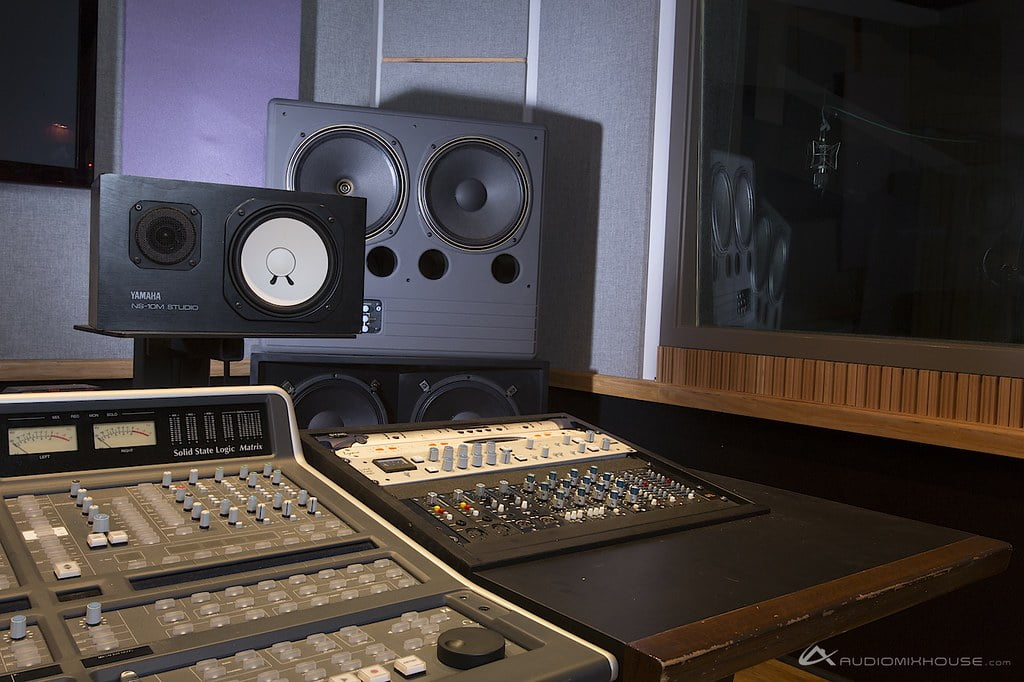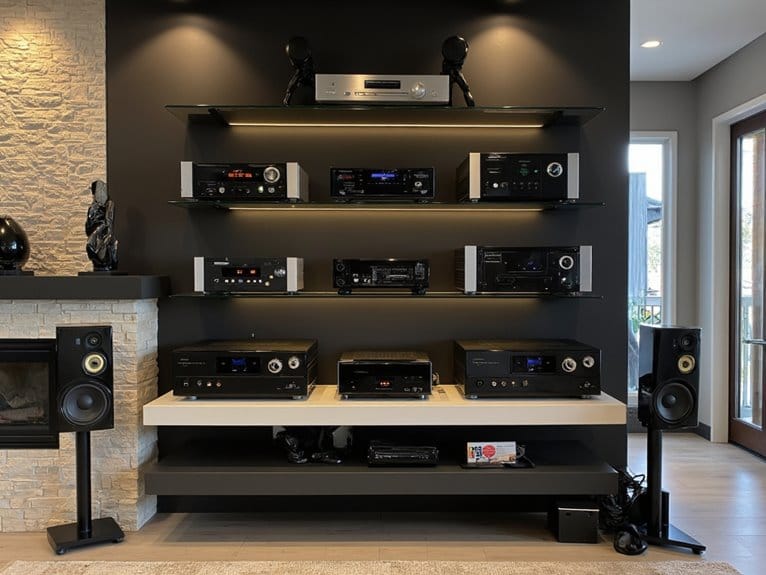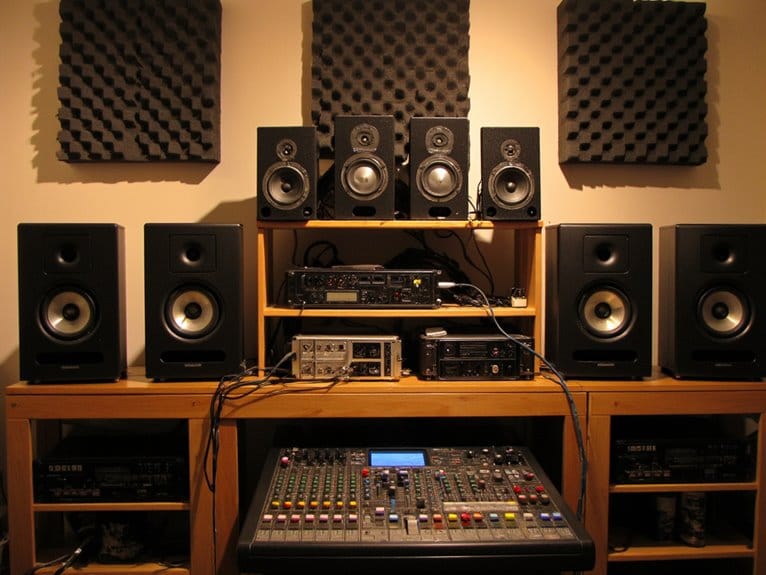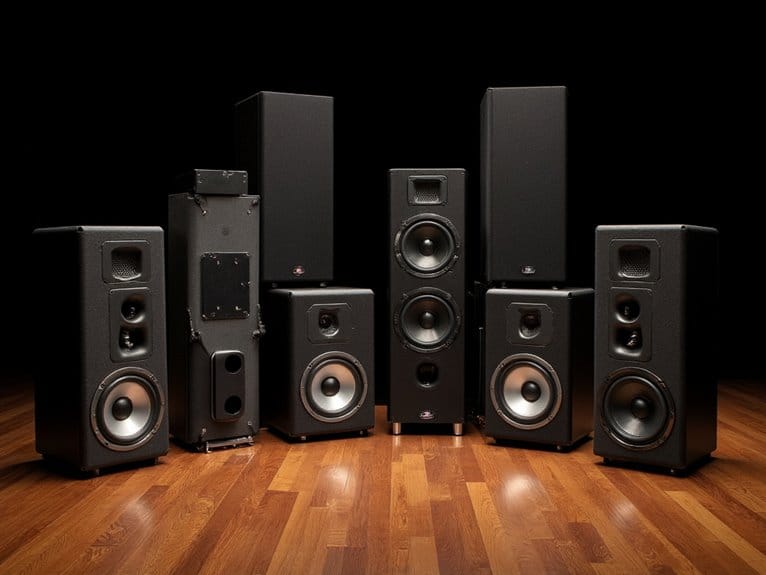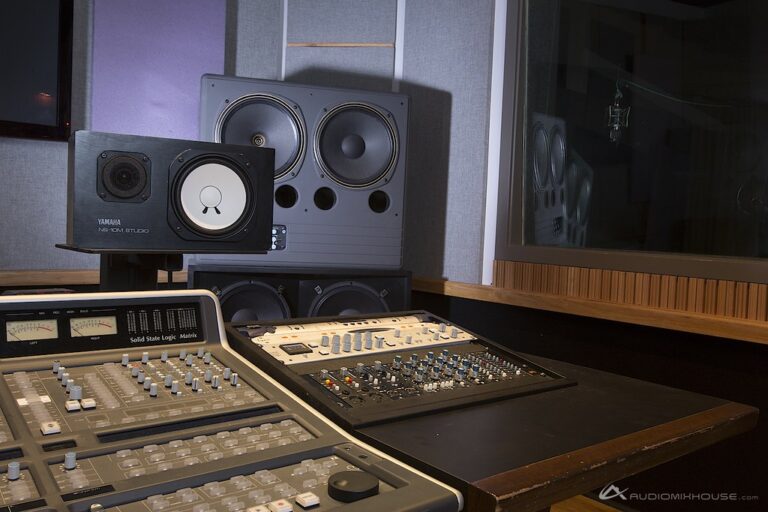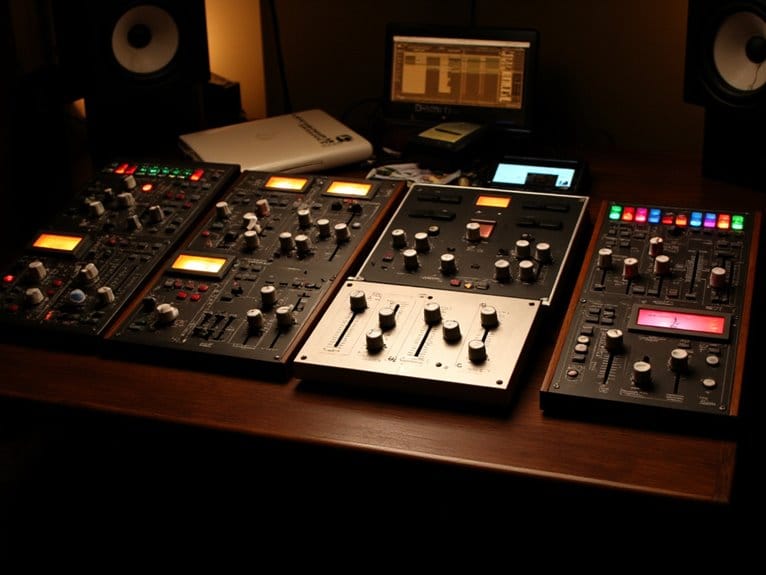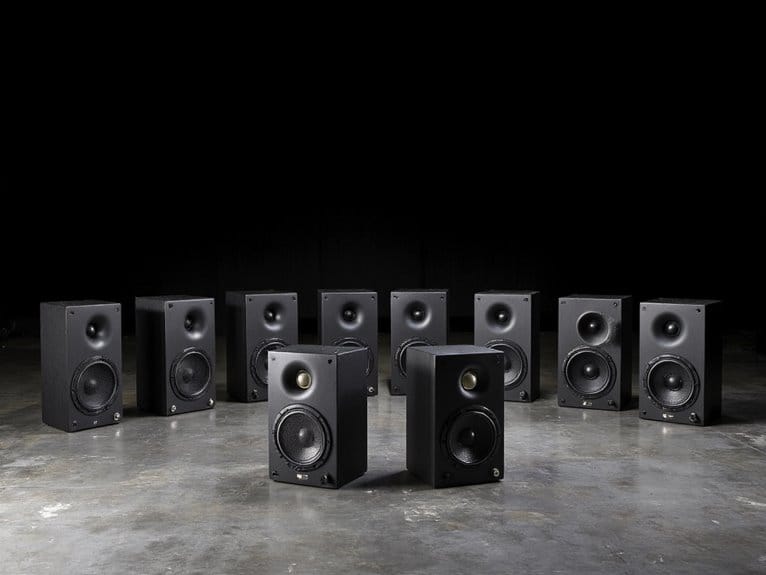Guide to Choosing Studio Monitors Based on Room Size
Hey there, looking to upgrade your studio monitors? Well, you're in luck! We're here to help you find the perfect ones for your room size. Whether you're working in a cozy bedroom studio or a spacious recording room, we've got you covered. Say goodbye to subpar sound and get ready to take your music to the next level.
We are supported by our audience. When you purchase through links on our site, we may earn an affiliate commission, at no extra cost for you. Learn more.
Now, let's dive into the world of studio monitors and how they relate to your room dimensions. Picture this: you walk into a shoe store, hoping to find a pair that fits just right. You wouldn't want shoes that are too small, causing discomfort, or ones that are too big, leading to a lack of support. The same goes for studio monitors and your room size.
So, how do you choose the right size? It's all about finding that sweet spot. If you have a smaller space, like a bedroom studio, you don't want monitors that overpower the room. They should fit in naturally, like a cozy sweater that hugs you just right. On the other hand, if you have a larger recording room, you'll want monitors that can fill the space with their grand presence, like a majestic lion roaming freely in the wild.
But wait, there's more! Unconventional room sizes can present a unique challenge. Don't worry, we've got some tricks up our sleeve to help you out. We'll guide you through the options that work best for these room dimensions, like a trusty compass guiding you through uncharted territory.
Now, let's talk about placement. It's not just about where you put your monitors, but how you position them. Think of it like arranging a delicious buffet. You want each dish to shine and complement each other, right? The same principle applies to your monitors. We'll share some tips and tricks on how to optimize their placement, so your sound can be heard in all its glory.
So, are you ready to step up your game and bring precision and innovation to your sound? We thought so! Let's embark on this exciting journey together and find the perfect studio monitors for your unique room size. Get ready to create music that will make your heart sing and your listeners groove. Let's do this!
Importance of Matching Studio Monitors to Room Size
When selecting studio monitors, it is vital to consider the importance of matching them to the size of your room. The size of your room directly impacts the sound quality and accuracy you will experience while using studio monitors. The acoustics of a room can greatly affect the frequency response and overall sound reproduction. Larger rooms tend to have more reflective surfaces, which can result in audio reflections and reverberations. On the other hand, smaller rooms can cause bass build-up due to standing waves. By choosing studio monitors that are appropriate for your room size, you can optimize the sound reproduction and reduce any unwanted reflections or resonances. This ensures that you can accurately hear the details and nuances in your audio recordings, leading to better decision-making during the mixing and mastering process. Additionally, nearfield monitor advantages make them an excellent choice for smaller spaces, as they allow listeners to sit closer to the speakers, minimizing the impact of room reflections. This proximity helps achieve a more precise monitoring environment, making it easier to make critical adjustments to your mixes. Ultimately, investing in the right studio monitors tailored to your room can significantly enhance your production workflow and audio fidelity.
Considerations for Small Bedroom Studios
To optimize the sound quality in your small bedroom studio, take into account the unique challenges posed by limited space and potential acoustic issues. In a small room, sound waves can bounce off the walls and create unwanted reflections, leading to a distorted listening experience. To combat this, consider using smaller studio monitors that are designed for near-field listening. These monitors are specifically engineered to provide accurate sound reproduction at close distances, making them ideal for small spaces. Additionally, you may want to invest in acoustic treatment to minimize reflections and improve the overall sound quality in your room. This can include the use of bass traps, diffusers, and acoustic panels strategically placed to absorb or scatter sound waves. By addressing these considerations, you can create an optimal listening environment in your small bedroom studio.
Choosing Studio Monitors for Medium-Sized Spaces
Consider using larger studio monitors to optimize sound quality in medium-sized spaces. Medium-sized rooms require a monitor that can adequately fill the space with accurate and detailed sound. The larger size of the monitor allows for better low-frequency response and a wider sound dispersion, resulting in a more immersive listening experience. When choosing studio monitors for medium-sized spaces, look for models with a larger woofer size, typically between 6 to 8 inches, to reproduce bass frequencies with clarity and precision. Additionally, consider monitors with a higher power rating to ensure sufficient volume levels in the room. It is also important to position the monitors properly, using acoustic treatment and adjusting their placement to minimize any potential acoustic issues in the room. By choosing the right studio monitors for your medium-sized space, you can achieve optimal sound quality and accuracy in your audio production.
Selecting Studio Monitors for Large Recording Rooms
If you have a large recording room, you'll want to choose studio monitors that can accurately reproduce sound throughout the space. In a room of this size, it is important to consider the power and frequency response of the monitors. Look for studio monitors with a higher power rating, as they will be able to fill the room with sound without distortion. Additionally, choose monitors with a wider frequency response to capture the full range of audio frequencies. This will ensure that you can accurately hear the lows, mids, and highs in your recordings. Consider monitors with multiple drivers, such as woofers, mid-range drivers, and tweeters, to achieve a balanced and immersive sound experience.
Studio Monitors for Unconventional Room Sizes
For unconventional room sizes, it is important to evaluate the dimensions and acoustic properties of the space to select appropriate studio monitors. In these unique settings, standard approaches to speaker placement and room treatment may not be effective. To address this, manufacturers have developed innovative solutions that cater specifically to unconventional room sizes. These monitors are designed with advanced digital signal processing algorithms that optimize sound reproduction in non-standard acoustic environments. Additionally, some models come with adjustable parameters, allowing you to customize the sound to your room's specific dimensions and characteristics. These monitors also feature built-in room correction technology, which automatically adjusts the audio output to compensate for any irregularities in the room. By investing in these specialized studio monitors, you can achieve accurate and reliable audio monitoring, even in unconventional room sizes.
Tips for Optimizing Monitor Placement in Any Room
To optimize monitor placement in any room, use proper positioning techniques and ensure the monitors are placed at an equal distance from the listening position. This is crucial for achieving accurate and balanced sound reproduction. Start by placing the monitors on sturdy stands or speaker mounts to minimize vibrations and improve sound quality. Position them at ear level, forming an equilateral triangle with the listening position. This allows for a more focused and immersive listening experience. Avoid placing the monitors too close to walls or corners, as this can cause unwanted reflections and bass buildup. Experiment with monitor placement within the room to find the best balance between imaging, clarity, and room acoustics. By following these tips, you can optimize monitor placement and enhance the quality of your audio production.
Conclusion
In conclusion, selecting the appropriate studio monitors for your room size is crucial for achieving accurate and detailed audio monitoring. Small bedroom studios require compact monitors with good low-frequency response, while medium-sized spaces benefit from monitors with a balanced sound profile. Large recording rooms demand powerful monitors with extended frequency range. For unconventional room sizes, it is essential to consider the unique acoustic characteristics and choose monitors accordingly. Remember to optimize monitor placement to minimize reflections and achieve optimal sound reproduction.

